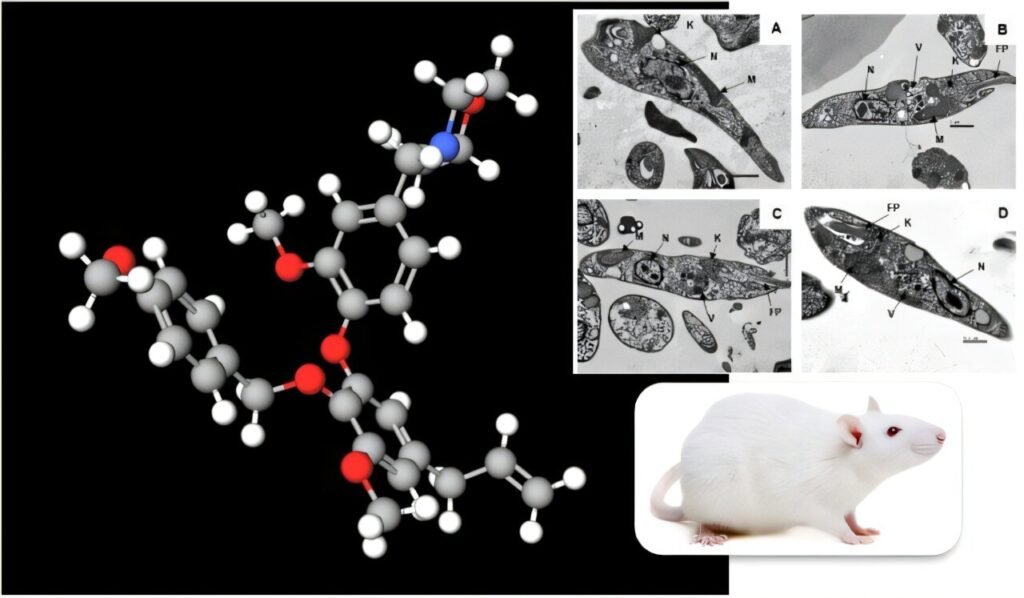The researchers then tested the synthetic compound in vitro against the parasite, as well as on infected macrophages (cells of the immune system that are the host cells for Leishmania), and in vivo in rats with visceral leishmaniasis.
According to the study, the compound was effective in killing the parasite in all three scenarios. The researchers also found that the compound exhibited low toxicity to the host cells, making it a promising candidate for further development as a treatment for visceral leishmaniasis.
“The substance was highly effective against the parasite in vitro and in vivo, and it had no toxic effects on the host cells,” said André Gustavo Tempone, a researcher at the Adolfo Lutz Institute in São Paulo and one of the authors of the study. “The results suggest that this compound can be further explored as a potential drug candidate for the treatment of visceral leishmaniasis.”
Visceral leishmaniasis is currently treated with drugs that are toxic, costly and require long periods of treatment, often resulting in poor patient compliance. The development of new, more effective and less toxic drugs is essential to improve the treatment of this neglected tropical disease.
The findings of this study represent a promising step towards the development of a novel treatment for visceral leishmaniasis, utilizing a compound derived from a Brazilian plant. Further research and clinical trials will be necessary to assess the compound’s safety and efficacy in humans, but the results of this study provide hope for a potential new treatment option for this deadly disease.
This groundbreaking research conducted by Edward Anderson and his team at the University of Oxford, in collaboration with researchers from the Butantan Institute in Brazil, has the potential to revolutionize the treatment of visceral leishmaniasis. By using a prototype molecule as a basis for designing more potent versions, the team was able to significantly enhance the molecule’s effectiveness in combating the parasite.
The initial prototype molecule served as a starting point for the researchers to optimize its structure and enhance its bioavailability. Through a series of chemical optimization processes conducted in vitro, the team was able to develop a more potent molecule with a significantly longer half-life in the animal’s organism. This breakthrough allowed the compound to circulate for a period 100 times longer than before, increasing its efficacy in combating L. infantum, the parasite responsible for visceral leishmaniasis.
Furthermore, the researchers identified the novel compound’s mechanism of action, which involved causing an irreversible collapse of the parasite’s energy mechanism while reducing inflammation in host cells. These findings not only demonstrated the compound’s potency but also its safety in not causing harm to host cells.
Moving forward, the team plans to conduct animal trials to assess the compound’s efficacy in treating rodents with leishmaniasis and determine the optimal doses for treatment. While their ultimate goal is to develop medications for visceral leishmaniasis, they acknowledge the lengthy process involved in bringing a new drug to market, highlighting the need for thorough testing and safety evaluations before clinical trials involving humans can be initiated.
This research holds significant promise for addressing neglected diseases like visceral leishmaniasis, where traditional pharmaceutical companies have shown limited interest. By leveraging Brazil’s rich biodiversity and abundance of chemical structures, the researchers aim to harness nature’s potential in developing much-needed medications for these diseases.
In conclusion, the collaborative efforts of researchers from the University of Oxford and the Butantan Institute have paved the way for a potential breakthrough in the treatment of visceral leishmaniasis. With further research and clinical trials, this novel compound could offer hope for millions of individuals affected by this debilitating disease.


